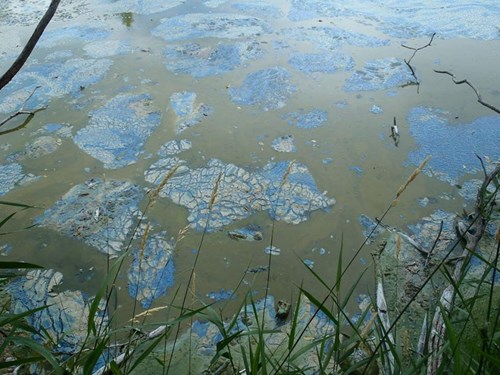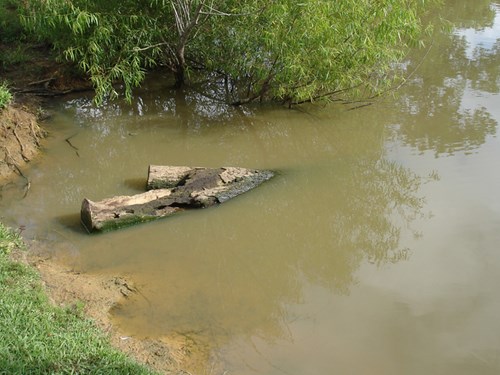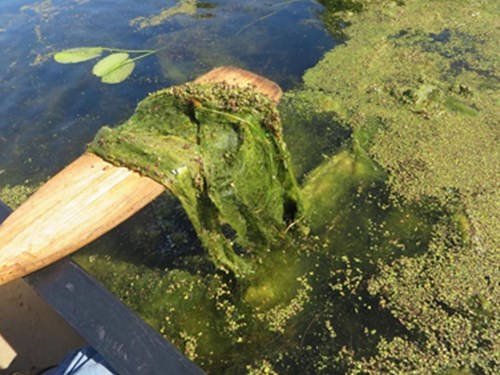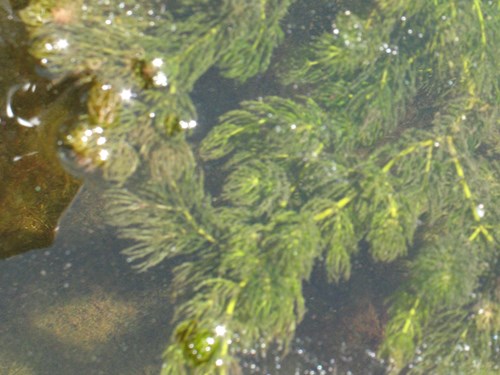Controlling Pond Algae Naturally
Algae is an essential part of a healthy aquatic ecosystem. Excessive algae growth or algae blooms, however, are both unattractive and detrimental to lake or pond health. In this post, you’ll learn more about what algae is, why it occurs and how to keep it under control naturally through improved aeration and water circulation.
What is Pond Algae?
The word “algae” is typically used as a broad term for aquatic plant-like organisms without true root systems that are capable of photosynthesis. That means algae covers everything from “pond scum” to floating “carpets” to strings to microscopic organisms that turn water green, brown, red or other colors.
Pond algae can, however, be broken down into four main types:
- Blue-green algae (technically bacteria), is the most common form of algae and comes in many forms. It is foul smelling and can be quite harmful if left untreated. When warm weather is in full swing blue-green algae sightings rise and it’s important to know how to protect yourself, small children and animals from dangerous blue-green algae blooms.
Blue-green algae is most common in warm weather (75° Fahrenheit or hotter) and in shallow nutrient-rich waters. It has several different appearances, which include foam, shoreline scum or mats on the water’s surface. As a rule of thumb try to avoid those secluded bays and shorelines! This alga is most dangerous when it’s seen in huge blooms where large areas of blue, vibrant green, brown and even red masses are found floating on the water’s surface. When blue-green algae blooms it releases toxins that attack both the liver and brain. These toxins are ingested through swallowing, skin contact and airborne water droplets.
Symptoms of blue-green algae ingestion will appear anywhere from 15 minutes up to 10 hours after ingestion. These symptoms include diarrhea, vomiting, weakness or staggering, drooling, difficulty breathing or convulsions/seizures. If you notice any symptoms, it’s important to get to an emergency center or vet as soon as possible!

Pictured above is an example of a harmful blue-green algae bloom! -
Planktonic algae are microscopic organisms that can change water color or create a “pea soup” film on the water’s surface.

Notice the "soupy" appearance of the water with planktonic algae. - Filamentous algae consists of large numbers of hair-like threads attached to the bottom or sides of a pond. When filamentous algae is severe, it can become detached and create mats on the surface.

When filamentous algae is left unchecked it grows in to thick mats or patches that cover the water's surface. - Chara, often called muckgrass, looks more like an aquatic plant than what most consider to be “algae.” It produces stems and leaf-like structures, but does not flower.

Chara aka muckgrass appears more like an aquatic plant as opposed to algae.
Why Does Algae Grow?
Some algae – particularly planktonic algae – is natural and necessary in a healthy pond. But overgrowth, called an algae bloom or algal bloom, is a problem.
In addition to being flat-out ugly, uncontrolled pond algae can deplete overall oxygen levels, resulting in everything from slow growth of desired species to full-scale fish kills.
So why does algae grow in ponds?
Algae, like everything in an aquatic environment, thrives on nutrients and warm temperatures. In particular, algae loves phosphorus and nitrogen, two elements especially concentrated in fertilizers and lawn treatments. As a result, ponds that receive a fair amount of runoff are particularly susceptible to algal blooms, especially in summer.
Increased run-off during periods of heavy rain can also contribute to unchecked algae growth, particularly in storm water ponds.
What’s worse, algae problems are self-replicating. Algal blooms reduce oxygen, which leads to lower levels of beneficial bacteria in the water column. This leads to increased amounts of excess nutrients, which fuels more algae growth.
How Can You Control Pond Algae?
A quick internet search reveals literally dozens of algae control methods, ranging from algaecide chemicals and phosphorous blockers to underwater UV lights. All certainly have their place, though degrees of effectiveness vary – particularly since it can be difficult to ascertain the type of algae being dealt with.
Improved pond aeration, however, is a proven method for dealing with nearly all types of problem algae. Underwater diffused aeration systems and aerating fountains increase the amount of available oxygen throughout the water column, supporting aerobic bacteria in the consumption of the nitrogen and phosphorous on which algae thrives.
Additionally, pond aerators and fountains mix cool bottom waters with warm surface waters, mitigating thermal stratification and producing currents that eliminate stagnant water. The result is an environment more suited to desirable plant and animal life, and less prone to problem algae.
Algae Control Success Stories
Aeration has been used successfully as a pond algae control strategy all over the world. Otterbine products in particular have been deployed in numerous applications, including:
- Barcham Trees, the largest tree nursery in the United Kingdom, experienced problems with nutrient-fueled blue and green algae blooms in their irrigation reservoir. A 5HP high volume water circulator showed visible results within 48 hours, and water PH returned to healthy levels in one week.
- An algae bloom at NCR Country Club took over 90% of their million-gallon water basin. An Air Flo diffused aeration system helped conditions begin to improve immediately.
